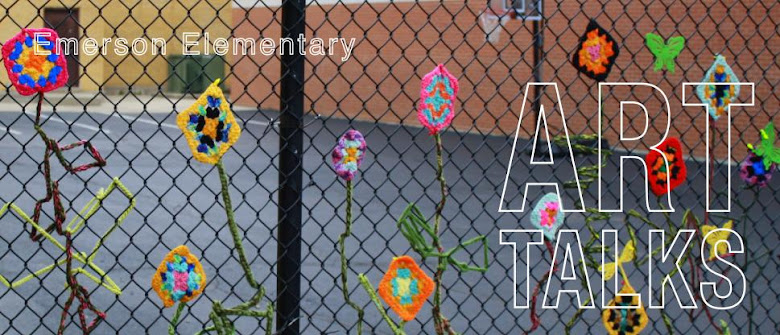On Tuesday April 15, 2014 Ms. Optie's kindergarten class received an art talk about recently deceased American artist George Rodrigue. Students read the story "Why is Blue Dog Blue?", discussed the artist background, themes, and techniques and utilized the free Blue Dog app on their ipads. Afterward each child created their own version of Blue Dog.

The following excerpt taken directly from the George Rodrigue Foundation website.
George Rodrigue (March 13, 1944 – December 14, 2013) was born and raised in New Iberia, Louisiana, the heart of Cajun country. Even today his work remains rooted in the familiar milieu of home. Bed-ridden with polio, young Rodrigue discovered his love of art at age eight, when his mother gave him his first paint by number set to relieve his boredom that summer.
Later Rodrigue studied art at the University of Southwest Louisiana in Lafayette, followed by the Art Center College of Design in Los Angeles, where the graduate school's curriculum provided him a nuts-and-bolts foundation in drawing and painting.

He then returned to Louisiana and developed his unique style, using the area's visual symbols not only to capture the essence of his personal world, but also to express his spiritual and cultural ideas as they pertained to Louisiana, to the South, and to America.
 Using the oak tree as his subject in hundreds of paintings in the early 1970s, Rodrigue eventually expanded his oeuvre to include the Cajun people and traditions, as well as his interpretations of myths such as Jolie Blonde and Evangeline. It was one of these myths, the loup-garou, which inspired Rodrigue's most famous series, the Blue Dog.
Using the oak tree as his subject in hundreds of paintings in the early 1970s, Rodrigue eventually expanded his oeuvre to include the Cajun people and traditions, as well as his interpretations of myths such as Jolie Blonde and Evangeline. It was one of these myths, the loup-garou, which inspired Rodrigue's most famous series, the Blue Dog.
As a boy, Rodrigue knew of a werewolf or ghost dog that lurked in sugar cane fields, threatening to haunt bad children. The legend said nothing about the loup-garou's color, but Rodrigue thought the night sky would cast a blue-grey shade on its fur. Over time the image on his canvas became friendlier, with a brighter hue and increasingly abstract settings. No longer the loup-garou, the Blue Dog, as well as other series such as Bodies, Hurricanes, and Reflections continue to challenge Rodrigue artistically. For more information about George Rodrigue visit www.georgerodrigue.com.
Blue Dog Activity Sheets created by George Rodrigue.















































